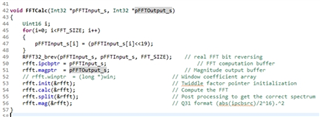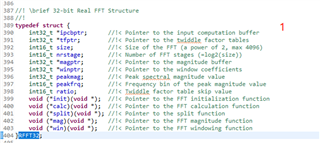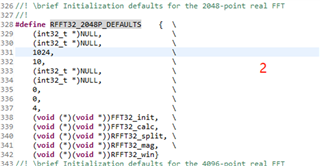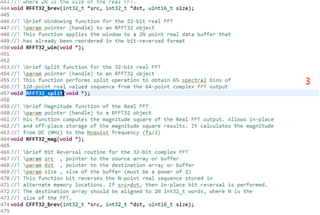Other Parts Discussed in Thread: C2000WARE
Hi expert,
my customer uses Fixed Point FFT to do AFCI function, and they recently report an issue that Many results of FFT3\ rfft.mag are calculated as 0,
which means a lot of information is lost compared to the spectrum (or amplitude spectrum) of FFT1;
Customer requirements: they need a method to obtain spectrum information, that is, the results of FFT1 and rfft.split.

FFT1 and FFT3 is defined as below:

I am not familiar with FFT, please help how to achieve this function.
BR
Emma








